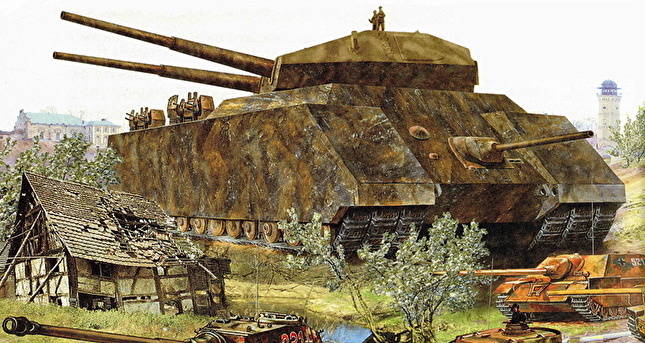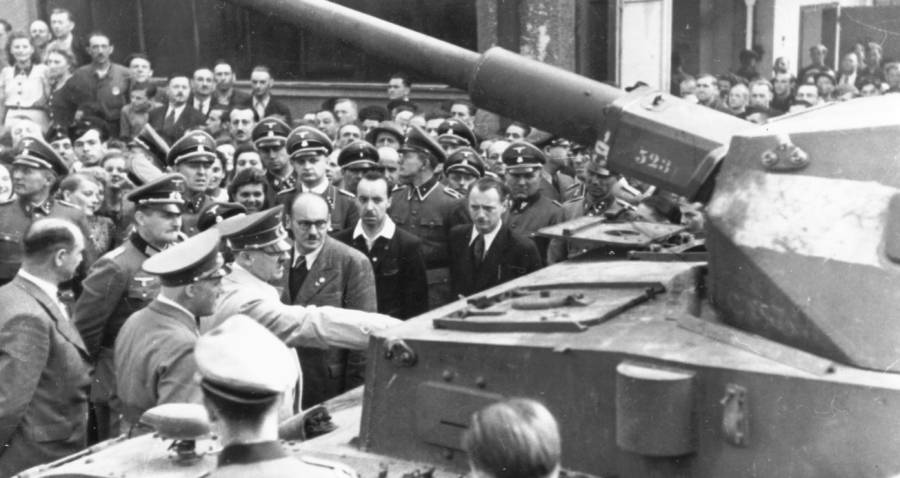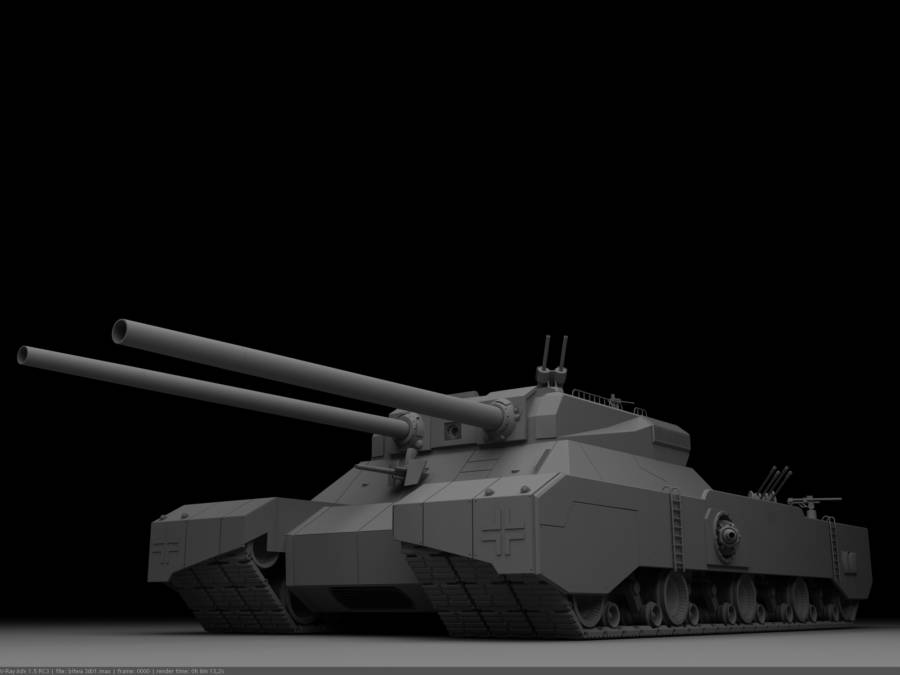

ullstein bild/Getty ImagesAdolf Hitler inspects a tank in 1945.
In the midst of World War II, Hitler pushed for the creation of one of the most powerful, and least practical, weapons of all time: the Landkreuzer P. 1000 Ratte.
The Landkreuzer P. 1000 Ratte would have been the largest, heaviest tank ever created. Weighing 1,000 tons, five times the weight of the heaviest tank ever built, and measuring 115 feet long, the Ratte was a testament to overkill.
The giant tank would have had twin-linked battleship cannons in a rotating turret mounted on it, that would shoot 280mm shells at their enemies, as well as numerous other smaller arms and anti-aircraft weapons. It would have had to have been manned by a 40 man crew and would have had a vehicle bay large enough to store a reconnaissance motorcycle squadron.

World of Tanks/YouTubeArtist’s render of the Landkreuzer P. 1000 Ratte.
It required three 69-foot-long treads on each side of the tank to carry the behemoth.
With its 300 ton armor that plated the entire tank in 10 inches of hardened steel, it would have been impervious to nearly all ground attacks.
This absurd juggernaut was designed by Edward Grotte, director of the German steel and munitions company Krupp during WWII. Krupp had previously designed the infamous Tiger tanks used by the Nazis.
The Ratte was one of the proposed “Wunderwaffe” of the Nazi regime. Wunderwaffe, literally meaning “Miracle Weapon,” was a designation given to numerous super-weapons that the Nazi’s attempted to develop during the war.

Zaleski007The Landkreuzer P. 1000 Ratte compared to the Panzer VIII Maus.
These included such outrageous ideas as the Kugelpanzer “ball tank”, the 800mm caliber Schwerer Gustav railway gun, and the enormous Messerschmitt Me 323 transport plane.
Like many of these “Miracle Weapons,” the Ratte was ultimately extremely impractical. Its immense weight meant that it couldn’t travel over bridges or roads, as it would quickly destroy either, and its size meant it couldn’t pass through tunnels or be transported by train.
Furthermore, its immense weight and size meant it could not travel more than 25 miles an hour, making it an easy target for enemy aircraft and artillery.
Despite these immense problems, like many of these impractical weapons, it was quickly seized upon and championed by Adolf Hitler.
Heinz Guderian, a German general and leader of the Third Reich tank divisions, wrote in his autobiography that, “Hitler’s fantasy led him into the realm of the gigantic.”
He wrote that “The engineers Grotte and Hacker were ordered to design a monster tank weighing 1,000 tonnes.”

1zoom.ruArtist’s depiction of the Landkreuzer P. 1000 Ratte.
After a year of development, this pet project of Hitler’s was finally put out of its misery by Albert Speer, Hitler’s Minister of Armaments and War Production, who correctly realized that there were no practical uses for the enormous tank.
He canceled the project, and this immense tank never saw the light of day.